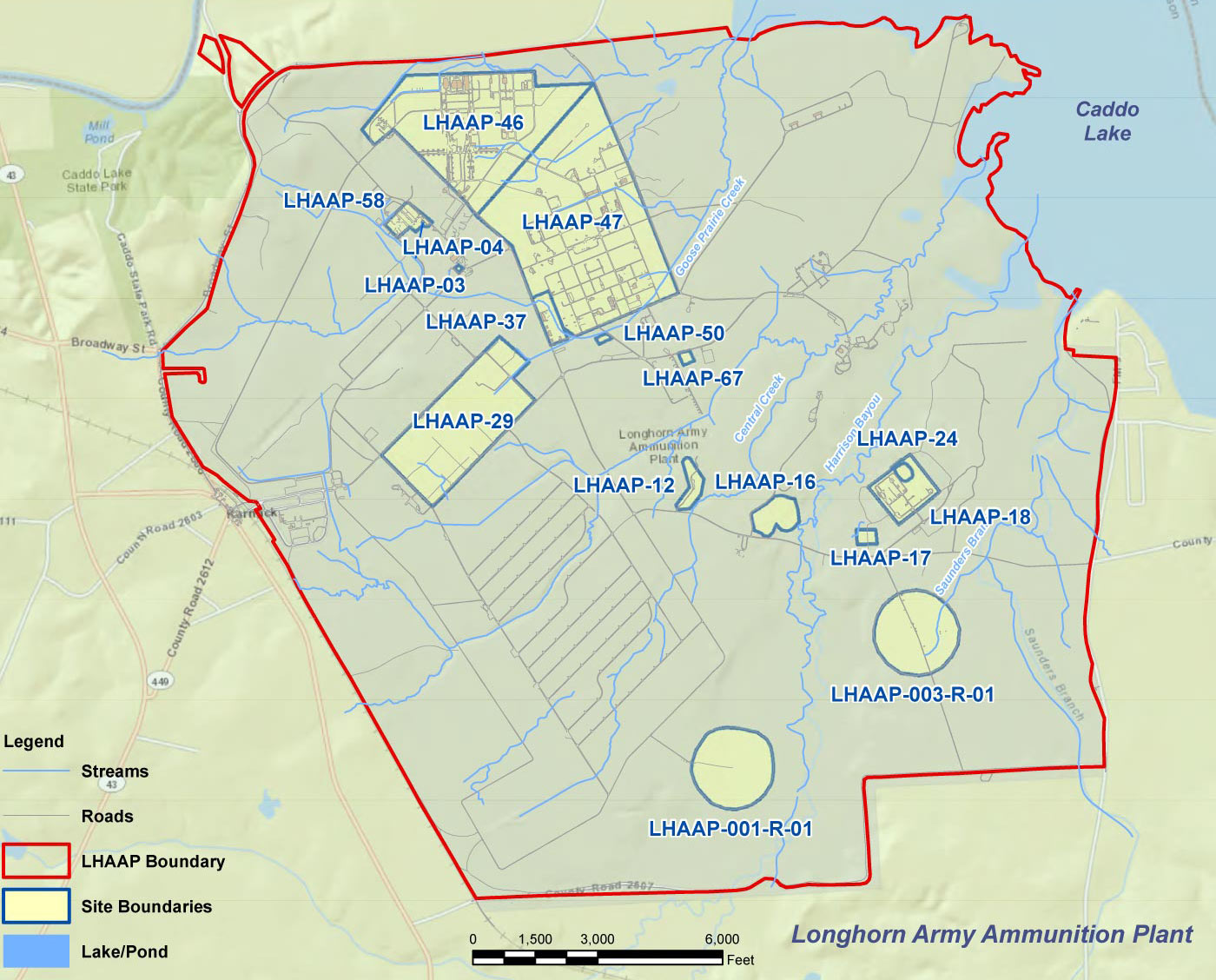Longhorn Army Ammunition Plant
Environmental Restoration Program
LHAAP-46
Site Description/History
LHAAP-46, also known as the Plant 2 Area is in the north-central portion of LHAAP in a former industrial area where pyrotechnic and illumination devices were produced until 1997. The site is approximately 190 acres and triangular in shape; bounded by Avenue ‘P’ to the southwest, the LHAAP property boundary fence to the north, and the LHAAP-47 site to the southeast. The surface features at the LHAAP-46 site are a mixture of asphalt-paved roads, parking areas, building foundation remnants, old buildings, and overgrown wooded to grassy vegetation-covered areas. The topography in this area is relatively flat with surface water drainage flowing east into tributaries of Goose Prairie Creek, which eventually flows into Caddo Lake.
Construction of facilities for producing JB-2 propellant fuel at Plant 2 began in 1944, but construction was halted in 1945 with the end of World War II. Plant 2 was used to produce pyrotechnic ammunition, such as photoflash bombs, simulators, hand signals, and tracers for 40 mm ammunition from 1952 to 1956. Plant 2 was reactivated to produce pyrotechnic and illuminating devices from 1964 to 1997. LHAAP, including Plant 2, operated until 1997 when it was placed on inactive status and classified by the U.S. Army Armament, Munitions, and Chemical Command as excess property. Industrial solid wastes and possibly hazardous wastes, such as parts cleaners and spent solvents, may have been generated by these activities.
Remediation Activities
Generally, field investigations conducted at the Plant 2 Area between 1991 and 2008 determined the nature and extent of contamination in the soil, groundwater, surface water, and sediments at LHAAP-46. The most likely sources of contamination at the site were spills resulting from a variety of support services that occurred in the area. The investigation data and risk assessments indicated that the soil, sediment, and surface water at the site do not pose a risk to the environment or to human health under an industrial exposure scenario for a future maintenance worker. The groundwater in the shallow and intermediate zones at the LHAAP-46 site is impacted by chlorinated volatile organic compounds ( VOCs). However, no contamination has been detected in groundwater in the deep zone. The groundwater contamination in the shallow and intermediate zones represents the primary driver for remedial actions as there are no ecological risks at LHAAP-46. The remedy for this site was implemented in 2013 and included a groundwater use restriction Land Use Control ( LUC) and monitored natural attenuation ( MNA).
Contaminants of Concern
TCE, cis-1,2- DCE, and VC in Groundwater
Current Phase
In the Remedial Action Operation phase including a MNA (sampling and reporting), well maintenance, a LUC documentation, and reporting.
Future Phase
Site Closeout
